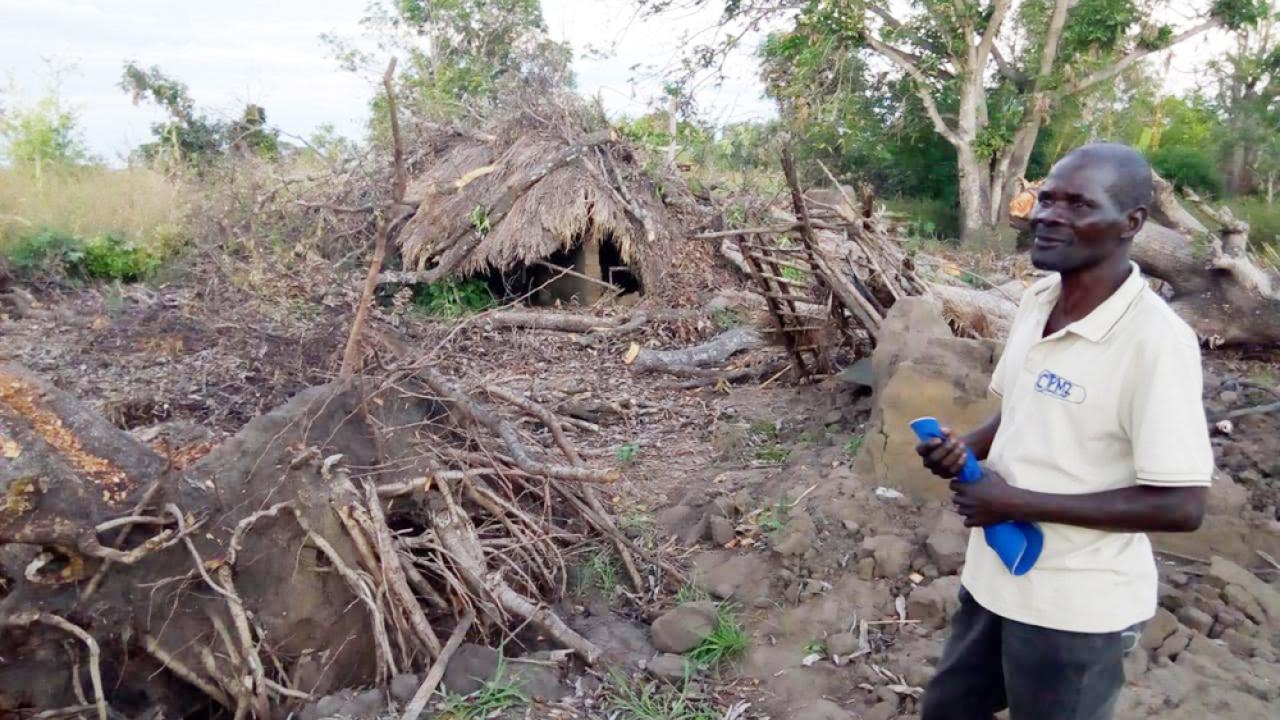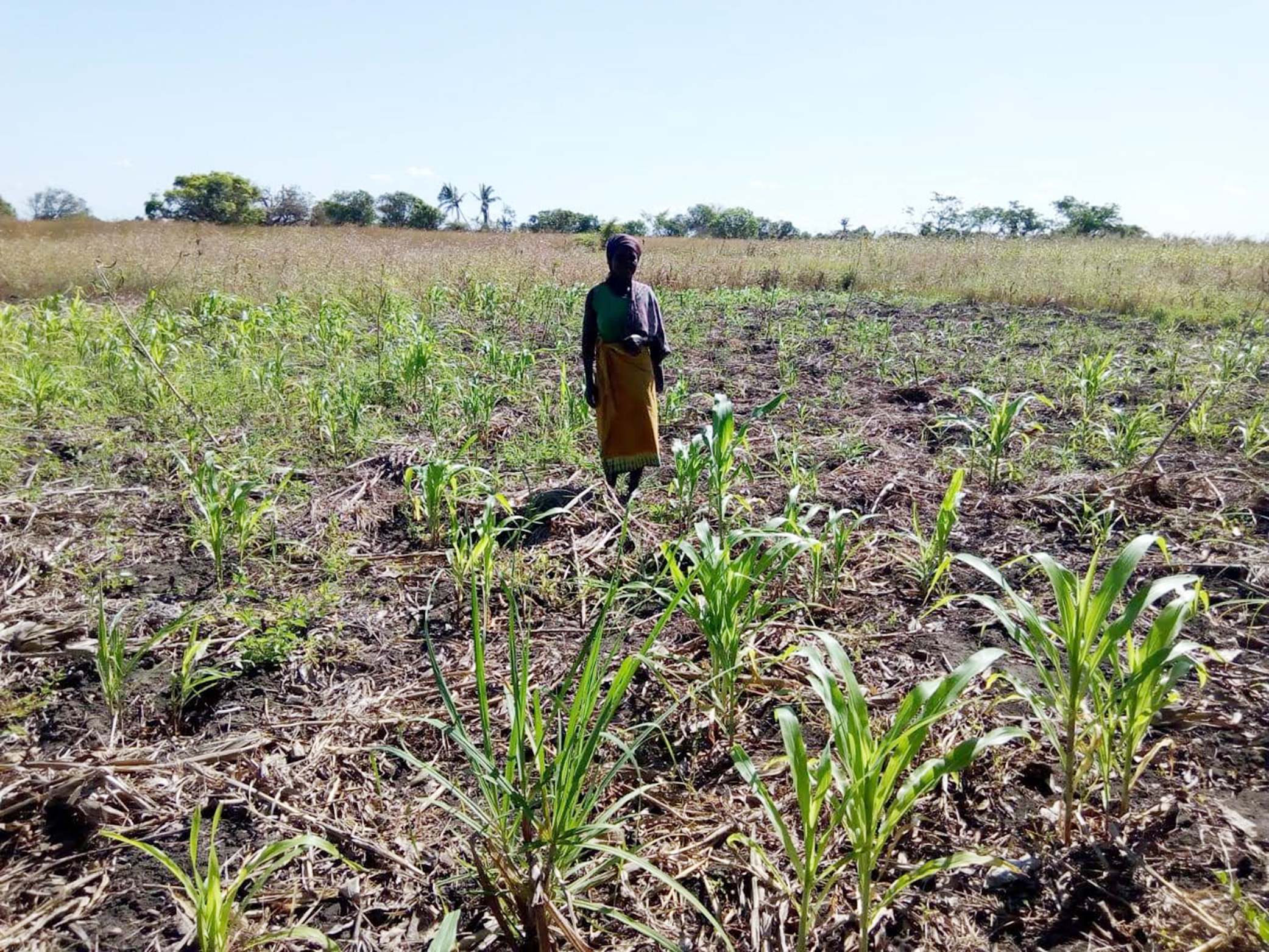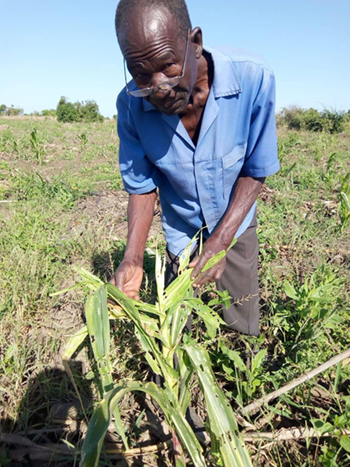
Families in Mozambique’s Bread Basket Need Continued Support Post-Idai
When Aniceto Matias visited rural communities in central Mozambique in late June, it had been three months since cyclone Idai swept through as one of the region’s most powerful on record. It had been here, along the highway connecting coastal Beira to the Zimbabwe border, that Matias spent four years on an AMA Innovation Lab project to protect these farming communities from drought.
Drought, a constant threat here, did not cause the destruction Matias witnessed in the Nhamatanda district and surrounding areas. Despite the outpouring of humanitarian aid, it was clear that significant challenges remained for the people who live here to rebuild the lives they had before the storm. Research on a similar disaster in Honduras twenty years ago suggests that some may never regain what they have lost without help.
“I can’t imagine how people could survive because they lost everything in one day,” said Matias. “People were sleeping and the walls fell on them.”
Challenges Remain Despite Humanitarian Efforts
In the Ndjove community, Matias spoke with Ana Doriz who lost her home and belongings in the flood. Her maize crop was drying in the field and she could not harvest any of it. She said she expects the price of maize and seed to go up because of crop damage across the region.
“Some people who have suffered more are still living in the accommodation centers in the tents and go looking for some small jobs to get some money,” said Doriz. “This is the activity that many are practicing to be able to feed their dependents, even those who are not in the accommodation centers.”

In the Macequesse community, Tato Gravata told Matias about losing his house and animals in the flood. His maize crop was drying in the field when the cyclone hit. He lost it all. In his community, the Mozambique government and humanitarian agencies including the World Food Programme have been distributing vegetable and maize seeds for immediate planting.
“There was a lot of damage although now many have vegetable seedlings from seeds that we have received,” said Gravata. “Let's see if it will work, because the maize seed we received and planted is being attacked by pests.”

Matias said that even for people who leave the area and try to start new somewhere else, they face significant challenges even if they find a community leader who will give them land to farm.
“The hard thing for them is that most of the lands, if the community leader gives them a new field, they have to cut trees and there’s a lot of labor to get started,” said Matias.
Local extension agent André Pita said that the total maize harvest in the area was reduced by 83 percent. The storm caused immediate problems with food security and hunger but also the future of farming . Floods deposited a layer of sand right on top of what had been productive soil.
“The government is helping, giving them some seeds, tools and some food, which is not enough,” said Pita. “Some will try to sell something like chicken or pig to get some seeds but not all of them because they lost everything.”

Phoenix Seeds representative Josephat Rushinga told Matias that the cyclone did minor damage to the company’s irrigation equipment in the Vanduzi district of Manica Province, but the biggest damage was done to their seed crop. Maize still in the field was destroyed. The company expects to lose about 30 percent of what they had already harvested to rot.
“We hope the government and development sector would buy more seed this upcoming summer season for free distribution or sale at subsidized prices to smallholder farmers,” said Rushinga. “Our company plans to increase its winter crop production to cater for more seed demand that has been triggered by the cyclone.”
Keeping Households above a Critical Threshold
AMA Innovation lab director Michael Carter has studied the impacts of acute disasters like cyclones as well as slow disasters like drought for much of his career. The challenges both types of disasters create are complex, he said, as are adequate responses.
Carter led the AMA Innovation Lab project in Mozambique that paired index insurance with drought-tolerant maize seed developed by CIMMYT that would provide for seed replacement in the event of severe drought.
“We can take what happened in Mozambique as a reminder that farmers are exposed to multiple perils,” said Carter, a professor of agricultural and resource economics at UC Davis. “Narrowly constructed agricultural insurance will only go so far.”
In 2011, Carter co-authored a study on how a similar natural disaster impacted among rural families in Honduras. Hurricane Mitch struck Honduras in 1998 as the fourth-strongest hurricane recorded in the Atlantic basin. The storm caused over 5,600 deaths and damages affected 1.5 million people.
Like cyclone Idai, hurricane Mitch destroyed homes and standing crops. Nearly half of the people Carter surveyed had lost productive assets, such as coffee bushes and banana trees that the people there relied on as much as farmers in central Mozambique rely on fertile soils.
The losses were not evenly distributed between families who were better and less well off before the storm. Families who had the least before the storm lost 31 percent of their assets while families who had the most lost 7.5 percent.

The poorest households were also the most sensitive to their losses and the least resilient. Within three years, the wealthiest families had begun rebuilding their assets. The poorest families had not, and were likely to never recover from poverty caused by the storm. These dynamics may be similar in central Mozambique as well as in the north where cyclone Kenneth caused destruction throughout Cabo Delgado just weeks after Idai.
“Most disasters are treated as humanitarian problems and not development problems,” said Carter. “Keeping families above critical asset thresholds in the longer-term through either safety nets or earning opportunities can help them to restore what they had lost so they have a chance to continue moving forward.”
